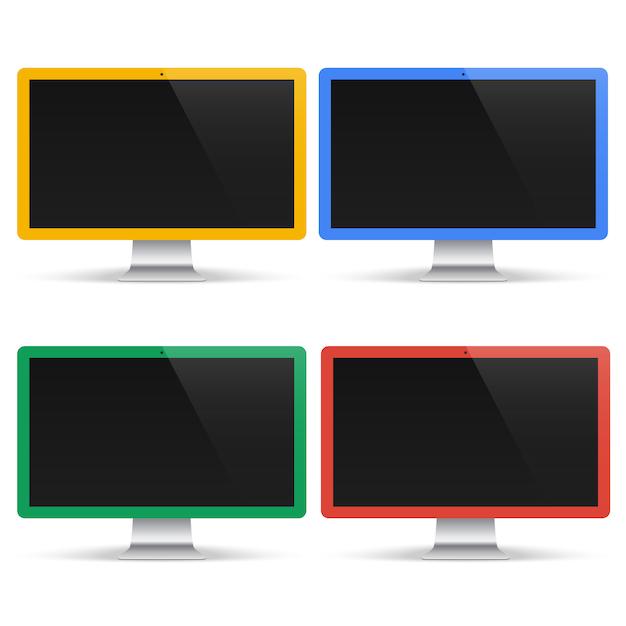The world of screens is filled with various aspect ratios, but two of the most commonly used ones are 4:3 and 16:9. You may have come across these terms when shopping for a new TV or computer monitor, or perhaps you’ve noticed them while exploring the settings on your favorite streaming platform. But what exactly do these numbers mean, and how do they affect your viewing experience?
In this blog post, we’ll dive into the differences between 4:3 and 16:9 aspect ratios, and explore why the latter has become the standard in today’s digital landscape. We’ll also cover how to express ratios in their lowest terms, how to solve ratios, and even touch on the concept of calculating ratios. So, whether you’re a movie buff, a gamer, or simply someone curious about the world of screens, keep reading to gain a better understanding of aspect ratios and their impact on your visual enjoyment.
So, let’s embark on a journey to unravel the mysteries of aspect ratios and discover why 16:9 has become the go-to choice for most screen experiences in this day and age.

What is the Difference Between 4:3 and 16:9 Aspect Ratio?
If you’ve ever dabbled in the world of screens and monitors, you might have come across the terms “4:3” and “16:9” aspect ratios. While they may sound like secret codes from a futuristic gadget, they are actually simple terms used to describe the width and height proportions of an image or screen. Let’s dive into the nitty-gritty of these aspect ratios and discover what sets them apart.
Understanding Aspect Ratios
Aspect ratios are expressed as two numbers separated by a colon, such as “4:3” or “16:9.” The first number represents the width, while the second number represents the height of the image or screen. To make it easier, let’s imagine we’re planning a movie night. If the aspect ratio is 4:3, it means that for every 4 units of width, there are 3 units of height. Similarly, for a 16:9 aspect ratio, we have 16 units of width for every 9 units of height.
Enter the 4:3 Aspect Ratio
Ah, the classic 4:3 aspect ratio, reminiscent of the good old days. This aspect ratio was the standard for televisions and computer monitors for many years. Imagine your grandma’s bulky TV set or the computer monitor you used back in the early 2000s—chances are they had a 4:3 aspect ratio.
The 4:3 aspect ratio gives you a more square-shaped picture, which can be ideal for certain applications. It was particularly popular in the era of cathode ray tube (CRT) displays, where square pixels were the norm. Although it worked well for TV shows, video games, and old-school movies, the 4:3 aspect ratio can feel a bit outdated in today’s widescreen world.
Embracing the 16:9 Aspect Ratio
Say hello to the 16:9 aspect ratio, the widescreen wonder that has taken over the digital realm. With its wider and shorter display, the 16:9 aspect ratio has become the standard for modern devices, including HDTVs, computer monitors, and smartphones. This wider format allows for a more immersive viewing experience, making it perfect for movies, high-definition content, and gaming.
The 16:9 aspect ratio has gained popularity due to its ability to showcase more content horizontally, leaving black bars (also known as letterboxing) on the top and bottom when displaying content with a different aspect ratio. Nowadays, you’ll find it difficult to come across a new TV or monitor that doesn’t boast this widescreen beauty.
Which One Should You Choose
Now that you know the basics, you might be wondering which aspect ratio is better. Well, the answer is—it depends! If you’re a fan of vintage games, classic TV shows, or simply enjoy the cozy feel of the old days, the 4:3 aspect ratio might be your cup of tea. However, if you crave cinematic experiences, love to lose yourself in the latest blockbusters, or want to keep up with the modern world of digital content, the 16:9 aspect ratio should be your go-to.
Ultimately, the choice between 4:3 and 16:9 aspect ratios boils down to personal preference and the intended use of the display. Whether you’re a nostalgic soul or a tech-savvy cinephile, both aspect ratios have their unique charm and practicality. So sit back, relax, and enjoy the visual feast, regardless of the numerical proportions!
In Conclusion
In conclusion, the difference between 4:3 and 16:9 aspect ratios lies in the width-to-height proportions of the displayed content. The 4:3 aspect ratio offers a square-like picture and is associated with older devices and technologies, while the 16:9 aspect ratio provides a widescreen format that is now the industry standard for modern devices. The choice between these two aspect ratios depends on personal preference and the intended use of the display. So go ahead and embrace your favorite aspect ratio, and let the world of visuals unfold before your eyes in all its glory!

FAQ: What is the Difference Between 4:3 and 16:9 Aspect Ratio?
In this FAQ-style subsection, we’ll dive into some common questions surrounding the differences between the 4:3 and 16:9 aspect ratios. We’ll explore why 16:9 has become the standard, how to express a ratio in lowest terms, how to solve and calculate ratios, and more. So, buckle up and let’s get started!
Why is 16:9 the Standard
Ah, the 16:9 aspect ratio. It’s like that popular kid in high school who always seems to steal the spotlight. Well, in the case of aspect ratios, 16:9 became the standard because of one word: widescreen. With its wider field of view, 16:9 is perfect for displaying all those epic movies and binge-worthy TV shows in all their panoramic glory. It’s a bit like having front-row seats at the movies, minus the overpriced popcorn.
How Do You Express a Ratio in Lowest Terms
Expressing a ratio in its lowest terms is a bit like decluttering your digital life. You want to simplify things and get rid of any unnecessary baggage. To express a ratio in lowest terms, divide both sides of the ratio by their greatest common divisor (GCD). It’s basically math’s way of saying, “Let’s simplify this ratio and make it look sharp!”
How Do You Solve 3 Ratios
Solving three ratios might sound like a riddle that requires a secret code and a treasure map, but fear not, it’s not as complicated as it seems. The key is to set up proportions. You need to compare the corresponding values of each ratio and make sure they are equal. It’s like finding harmony in a melodious symphony – everything needs to be in sync. Once you’ve set up the proportions, cross-multiply and solve for the missing variable. Voila! You’ve cracked the code of solving three ratios.
How Do You Calculate Ratios
Calculating ratios is like baking a cake – there’s a recipe you need to follow. To calculate a ratio, divide one value by another. It’s as simple as slicing a delicious pie into equal parts. For example, if you want to calculate the ratio of apples to oranges, count the number of apples and divide it by the number of oranges. Your answer will give you the apple-to-orange ratio. Easy-peasy lemon squeezy!
What is the Ratio of 12 to 15
Ah, the ratio of 12 to 15. It’s like a math version of a football game where the score matters. To find the ratio of 12 to 15, we divide 12 by 15. It’s like dividing the number of goals scored by a team by the total number of goals in a match. So, in this case, the ratio of 12 to 15 can be expressed as 4:5. Go team!
Can Ratios Be Written Either Way
Absolutely! Ratios are as flexible as a yoga instructor doing the splits. They can be written in different ways, but the relationship between the numbers remains the same. For example, the ratio 2:1 simply tells us that the first number is twice the value of the second number. Flipping the numbers around to 1:2 doesn’t change the relationship – it just tells us that the second number is now twice the value of the first number. So, go ahead, flip those ratios like a pancake!
What is the Difference Between 4:3 and 16:9 Aspect Ratio
Ah, the age-old battle between 4:3 and 16:9 aspect ratios. It’s like choosing between a classic black-and-white movie and a vibrant, high-definition masterpiece. The main difference lies in the shape of the screen. The 4:3 aspect ratio gives you that more boxy, retro feel, while the 16:9 aspect ratio is wider and more suited for modern widescreen displays. Picture yourself watching a classic sitcom versus a blockbuster action flick – each aspect ratio sets a unique stage for your viewing pleasure.
What is the Ratio of 12 to 5
Ah, the ratio of 12 to 5 – it’s like mismatched socks that somehow work perfectly together. To find the ratio, divide 12 by 5 and simplify it. The result is a snazzy ratio of 12:5. It’s like having twelve tasty cupcakes and only five people to share them with. Talk about a dessert dilemma!
And there you have it! We hope this FAQ-style subsection has shed some light on the differences between the 4:3 and 16:9 aspect ratios. Whether you prefer the classic charm of 4:3 or the widescreen wonder of 16:9, each aspect ratio brings its own unique flavor to the visual feast. Now, go forth and choose the aspect ratio that suits your viewing preferences. Lights, camera, action!
